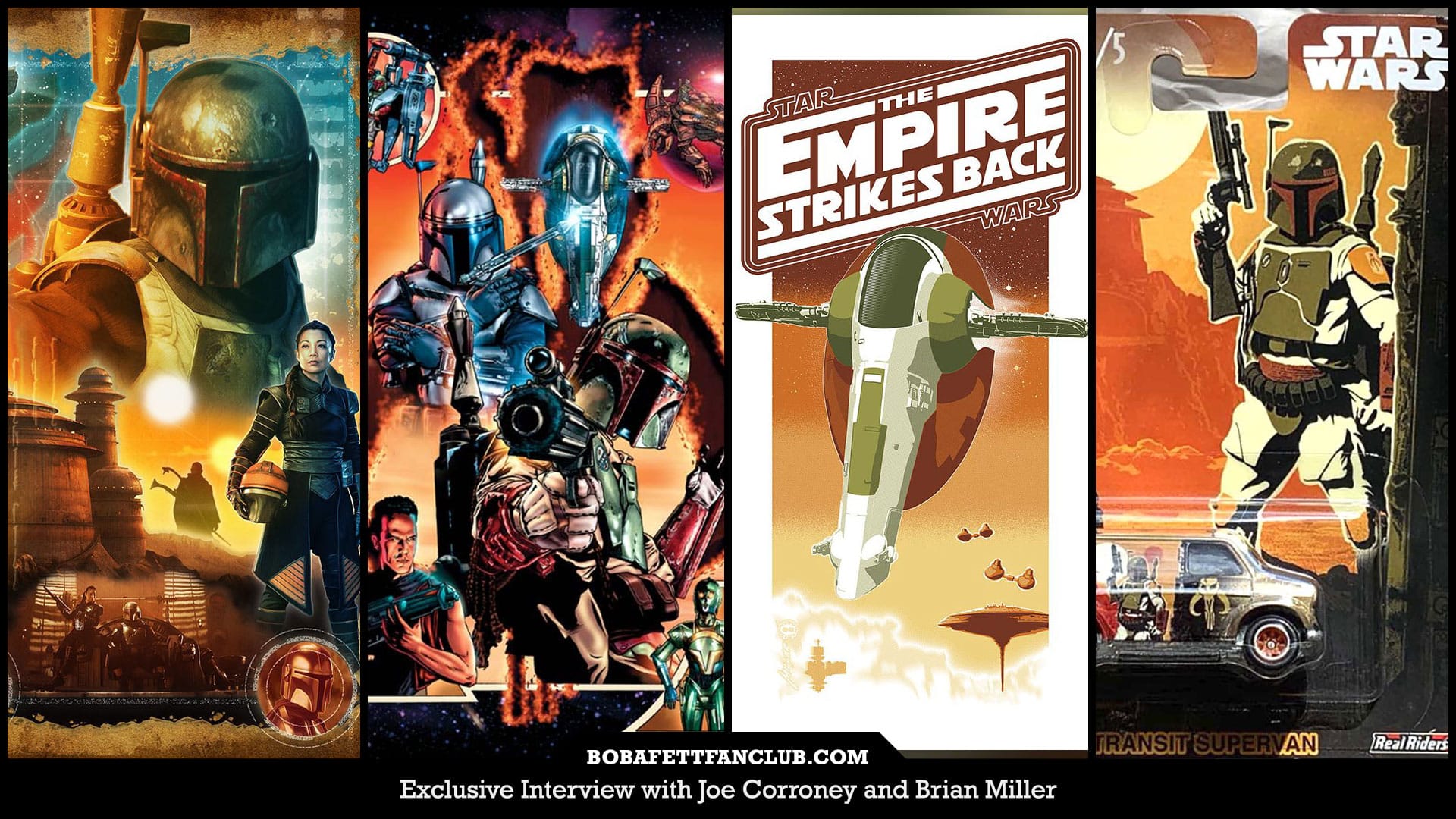
Exclusive Interview with Joe Corroney and Brian Miller
Since the early 2000s, artists Joe Corroney and Brian Miller have teamed up to create Star Wars pieces that have left their mark on the fandom, and Boba Fett is well represented in both their individual and collaborative portfolios. In fact, one of their first collaborations, published in a ten-page Star Wars Insider #80 article on the history of the Mandalorians, features the galaxy’s most feared bounty hunter prominently.
Boba Fett Fan Club spoke with the collaborators, whose work will be featured at the Star Wars Celebration Art Show in Anaheim this coming May, on the process of creating licensed artwork for Lucasfilm, some of the Easter eggs they’ve hidden in their art and what it’s like to see their work featured on huge posters and Hot Wheels cars. (We also interviewed Brian in 2018 at SDCC.) The following interview has been edited for length and clarity.
Boba Fett Fan Club: Have you always been interested in doing Star Wars art?
Joe Corroney: I knew at an early age I wanted to be an artist, a very young age. I was like four or five. But I think it was in late high school or early college, once Dark Horse started putting out Star Wars comics, I was like, not only do I want to be a comic book artist, but I want to be a Star Wars comic book artist. When I was in college, I was reading all the Dark Horse comics that were coming out, Dark Empire and Tales of the Jedi. And that’s what sort of led me on the path to want to pursue a career doing Star Wars art.
And then as soon as I graduated from art college, I submitted my portfolio to West End Games, and I was illustrating Star Wars books and games and gaming magazines for that company. And then that led to doing artwork for Star Wars Insider. And then basically, I just pursued any licensing opportunity wherever Star Wars art was being produced as a freelance illustrator. That’s kind of how I slowly built my career, which I’m still doing now. Like, hey, do you have the Star Wars license? Can I draw for you?
Brian Miller: So my path is a little different. As a kid, I was all about the coloring books and drawing and art class. I think I knew, much to my parents’ chagrin. But part of that was I was raised in a very strict home where I could only watch Christian TV or public television. So I chose public television, which is where I discovered things like Bob Ross, Doctor Who, Monty Python, so all the sort of nerdy and artistic and creative things. So at some point after high school, I thought I was going to be a fine artist.
I fell in with this artist, and he was doing comic books stuff. And so I started collaborating with him. He dragged me to a comic book convention, and there was this pivotal moment at this comic book convention, as he and I are showing our stuff around, I was doing hand-painted coloring and stuff at the time, and all these people were like, “Oh, this is good. Do you want to do my next cover? Do you want to do this trading card?” And so, kind of without even thinking about it or trying, I kind of got sucked into this comic book world.
Maybe a year later, I got to go to my first San Diego Comic Con, and I had a client who I was working with on their comic, and they paid my way because there’s no way I could have gone on my own. And they said, “We just want you at the booth, but you can take an hour off every day if you want to go around and hand your portfolio out and stuff.” So I’m doing that, kind of not thinking much about it.
And six months later, I get this phone call in the middle of the afternoon. It’s like, “This is Rob Liefeld, and I want you to help me with my issue of Wolverine I’m working on.”
So after five years of struggle, it looks like I’m an overnight success because I really go from being published on things no one’s ever heard of, and then all of a sudden, within one month, it’s like Wolverine, X-Men, Avengers, just every top Marvel title. So now I’m fully entrenched, 100% in the comic book world, and I get to go to Mid-Ohio Con where I meet Joe, and Joe’s already doing Star Wars stuff. But even then I thought, “Oh, I’ll never get to do Star Wars stuff. I’m doing these superhero things.” It just didn’t even seem like a possibility.
JC: In 2005, we worked together on our first Star Wars project. I reached out to Brian because I needed coloring help, I was really overwhelmed with lots of projects at the time. Our mutual friend Justin Chung, who introduced us at a comic convention here in Ohio eight or nine years earlier, was like, “Why don’t you ask Brian to help you with your projects?” I’m like, “That’s a great idea. But is he really busy? He does stuff for Marvel, is he going to want to work with me?”
But I reached out to him and he’s like, “Heck, yeah!” So he colored some General Grievous artwork for Star Wars Insider. And that was in early 2005, which was months before Revenge of the Sith had come out. So we were the first artists to illustrate General Grievous outside of Lucasfilm and ILM, and they put it in the magazine, and they had a big story on it.
BM: It was really cool. And working with Joe, I learned so much about composition and visual storytelling that was different than what I knew from comics. And so that was sort of my entrance into the world of Star Wars art. And that led to trading cards and then eventually to being able to do the fine art illustrations that Joe and I both do now. So it was quite the wild ride, but at the same time, it was like a dream come true because it was, to me, an unattainable goal. Anytime you achieve an unattainable goal, you feel like you really leveled up for sure.
BFFC: How would you describe your artistic styles, like the philosophies and influences that really come into your work?
JC: One of my earliest artistic influences was the Marvel Comics adaptation of the first Star Wars film back in 1977 when the movie was first released. I was barely four years old and my mom bought me my first comic books and they were Star Wars comics. And that’s how I relived the movie because this was before digital and VHS. So either you went to the movie to see it again or you just kind of relived it however. But the comic book was my gateway to that. So that inspired me to want to draw the Marvel Comics Star Wars. So it all kind of comes back to Star Wars with my art, from the very roots of my DNA, really.
I remember collecting the Topps trading cards and seeing the Ralph McQuarrie production paintings on the trading cards. So as a kid, I would get these cards that weren’t scenes from the movies, but were paintings. And I’m like, “What are these?” I didn’t understand as a kid that this was production art, but they were these beautiful paintings of Star Wars characters and slightly different versions of the scenes that we hadn’t really seen. So that inspired me artistically to think about paintings and color.
Some of my artistic inspirations as an illustrator are actually comic book illustrators I grew up loving. And then from there, Ralph McQuarrie for his production Star Wars artwork on the original trilogy and then Drew Struzan for his movie posters and his book covers. In college, I was collecting the Star Wars novels that had his beautiful book covers on them, and of course, the Star Wars posters he had illustrated. So it’s a lot of those pop culture artists, like comic book artists and movie poster artists and movie production artists as well.
BM: Well, for me, I think first and foremost, I’m just influenced by all things that are vintage or retro. So that could be the WPA style, or the old travel posters, parks posters. But even further back, Art Deco, Art Nouveau, just any of the sort of really bold, graphic kind of movements are the things that I think connect with me.
But then also animation art. Don Bluth is maybe the main thing that made me want to be an artist as a kid, was seeing The Secret of NIMH and playing Dragon’s Lair and some of that sort of stuff, and even some of the Disney artists, like Mary Blair. Joe mentioned Ralph McQuarrie, which I think I probably had the same portfolios he was talking about. It’s hard to point to one thing and be like, that’s what made me the artist I am today. But I think when you take all those things together, you can see the influence in my work.
BFFC: What’s the process of working with Lucasfilm like? Do you approach them with an idea, or do they come to you? And do you get sneak peaks of upcoming, unreleased Star Wars work?
JC: It depends on the project. Nowadays, Lucasfilm is much more strict with what they release to their licensed artists outside of Lucasfilm and ILM. So Brian and I, nowadays, will get less information until usually right when the movie comes out. Back in the day, though, when the internet was kind of in its infancy and there were fewer online leaks and such, I mean, I was drawing for Dark Horse some of the Star Wars comics and working on the Episode III adaptation with another artist. I had like, a partial script to the movie, which you wouldn’t even hear of nowadays. It wasn’t the full script, but it was a lot of the dialogue in scenes that were from our section that I was helping out with.
Of course, you had to sign NDAs and all that, obviously, back then. But that kind of stuff doesn’t happen with the licensors [today] as much. It’s like pulling teeth to get reference or information. They’re like, “Yeah, we want you to do a Book of Boba Fett poster.” Okay, great, I need a reference. And they’re like, “Well, just use the trailer that’s already out.” I’m like, “Okay, but I need a little more than that.” They’ll send some things, but they’re just much tighter. Back in the day, we would get a lot more information.
BM: And they’re just trying to avoid spoilers.
JC: Yeah, they’re avoiding leaks. I know, especially with the Disney Plus shows, [Jon] Favreau especially has really tight reins on those shows. He wants the experience to be magical for everyone who watches it. No one had any idea about Grogu when The Mandalorian first aired, that first episode. So everyone remembers their first time seeing that character and how special that experience was. So they’re trying to preserve that magic. So I get it. We are privy to some things, but not the bigger picture, per se. But Brian has a good analogy in terms of how it is to work with Lucasfilm and ILM and these companies, how they give us freedom, but they keep us focused.
CM: Someone really smartly said, “Have you ever been to a bowling alley? And little kids are bowling and they put those foam logs in the gutters to keep the little kids from striking out. That’s really Lucasfilm.” Hopefully we can knock down some pins and get a strike, but they’re saving us from striking out completely. And I think that’s the most apt analogy. They’re not controlling us. They’re not telling us what to do. They’re just trying to keep us from making from some big mistake or tripping over our own feet or whatever it is.
JC: They’re open to us pitching ideas, but if it potentially could step on the toes of the Story Group at Lucasfilm or something that’s already coming out, or something they’re concurrently developing, they’ll just be like, “Okay, well, that’s a great idea, but maybe change this character to that character.” Or maybe, “That’s a great seed of an idea, but maybe alter it this way,” which is something I’m currently experiencing with a Star Wars poster I’m working on now. I have two characters interacting, and it’s not a literal interaction, but they just prefer not to see these two characters together yet. They don’t want to telegraph anything or create any kind of unnecessary speculation.
BM: A good example of that is, I remember when Mandalorian first came out, like Joe was saying, they weren’t giving artists a lot of upfront info. So a lot of artists were just generating concepts based on whatever the previous week’s episode was. So early on, a lot of artists’ concepts are The Mandalorian killing IG-11 or vice versa. Of course, we didn’t know where they were taking that story with IG later. And so, of course, all those concepts got declined at the time. Everyone’s like, “Why do they hate my artwork?” But then when you get to that part of the series, where now IG is being the nanny droid to Grogu, you’re like, “Oh, it makes sense why they didn’t want imagery coming out of IG getting slaughtered,” or big fights, or whatever those concepts were. Because if you only saw the first episodes, you’re like, “This is the hero, this is the villain.” And then, of course, that dynamic completely changes. So again, they’re just trying to save us from ourselves sometimes.
BFFC: Something I’d love to know is how much research do you usually do for a piece? Are you looking at archival stuff? Are you looking on Wookieepedia? What’s that process like?
JC: I’ll definitely go to Wookieepedia. Oftentimes, I’m emailing and contacting the writer if I’m illustrating something, and then, of course, Lucasfilm will send me references. I have a library of Star Wars books. Part of the fun of the job for me when I get a new assignment, especially if I’m looking for inspiration or even just additional reference for research, is just going through those books as a fan and reliving those movies or those scenes or those characters or even discovering like, “Oh, that’s a really cool picture. I’ve never seen anyone illustrate that. That would be cool to include in a poster or an illustration.” So that’s part of the fun of researching is getting to work with these images and trying to extrapolate something new and exciting from them for fans.
I think details in Star Wars art just make the art that much more legitimate and that much more professional and authentic. When I see someone do a Boba Fett illustration, but the antenna is on the wrong side because they just flipped the photo reference… I get that you flipped the photo reference to be unique or to make the photo work better for the composition, but why wouldn’t you fix that error and translate that detail over? Or Harrison Ford has his scar on his chin going one angle. But if you flip a Han Solo photo to paint at a different angle, you have to change that scar to match. Again, it’s something minuscule. But go that extra effort and just make the details a little more accurate.
And I think Star Wars fans are so hardcore. If they’re like me, and I know there’s millions of them out there like me and Brian, that pay attention to the details. The average person isn’t going to care. Like, the average person off the street is going to, go, “Oh, that’s Boba Fett or that’s Han Solo.” But we care. The detail’s got to be authentic.
BM: Fans have had over 40 years to obsess about the details now. So there are people that really, truly have an encyclopedic knowledge. And even if they don’t, they’ve got every YouTube and video and toy and thing to go back and look at and be like, this is how it should be.
BFFC: Joe, I was wondering, could you talk about your Mandalorian history piece?
JC: Brian actually colored that artwork with me, I think right after the General Grievous art, which was in 2005. And that was for an article written by Abel G. Peña, who is a Star Wars author and an old friend of ours. And the idea behind the article in Star Wars Insider was just sort of taking all the Expanded Universe elements of Mandalorian characters like Boba Fett and Jango and all the information from the comics and the novels and doing this nice compendium article in the magazine. And it was a super popular article because back in 2006, it was like a very important resource for the Star Wars fandom, especially those interested in Mandalorian-related material. I was commissioned to do an illustration that spotlighted some of the things in the article, which included, of course, Boba and Jango. I made them the main characters in the artwork and then some other miscellaneous characters and objects from the article, like you have Canderous Ordo from the Knights of the Old Republic video game.
The model for the Boba Fett pose with the rifle is my friend Chris Bartlett, who is on The Mandalorian. He plays all the droid characters and the alien characters. So this was back before he was obviously doing this for Lucasfilm, but he was a replica prop builder, and he was in the Star Wars community. He was a cosplayer as Boba Fett. So I took some photos with him as Boba Fett, he did all the poses. I chose the right photo I wanted for the artwork, and then I had him pose for me as Canderous Ordo. So Chris Bartlett’s first official Lucasfilm appearance is in Star Wars Insider back in 2005 as Boba Fett. And then I put in some other characters from the article, some Tales of the Jedi stuff and some other Mandalorian-related characters. I did some other illustrations for the article, and Brian was the one to help me color all those. So that was one of our earliest collaborations, I believe.
BM: That was fun, but it seems like a long time ago now.
JC: Jeez. Yeah. But a lot of that article and that artwork, I mean, it’s still referenced today as a cornerstone for the Mandalorian fandom.
BM: People forget there wasn’t as much Star Wars content as there is now. And those stories and illustrations, that was really breathing life into the fandom when we were having just one prequel film here and there, and there weren’t the TV shows or anything that we have now. So it was a big deal, really, to be able to come in and be like, here’s this definitive look at the Mandalorian timeline.
JC: It was a good time to be a Star Wars creator, to kind of create these foundations for the mythology. And that’s one of the things as a fan that I value highly is when I get to contribute my own ideas or designs, or create a new alien or draw a new spaceship, and it gets incorporated into the mythology and takes on a life of its own, which I’ve seen happen a little bit here and there with certain things.
BM: The way I like to say it is, all the things that I got beat up on the playground for liking as a kid are the things that I get to help foster the legacy of for the next generation now. So it’s all worked out.
BFFC: Brian, I wanted to talk to you about your Bounty Collected piece.
BM: I think it started life as a Star Wars celebration concept, and I had done one for a previous Star Wars Celebration called 40 Years of the Force that was based on A New Hope. And so I wanted to do something in a similar vein for Empire. I’m always thinking about things that we don’t see on screen, and I was like, well, we see Boba Fett and his ship. We see Solo in carbonite loaded up, and we see the ship take off, but we don’t really see what happens. We don’t see anything again until the next movie. And so I just had this little vision of Cloud City in the background, and Boba Fett’s ship just coming right out of it, right towards the viewer. And then I had to build the story around that.
But to then go in and research the ship and the details and how I want it to look and still trying to keep it in my style, that was so much fun.
BFFC: Joe, I would love it if you could talk to me about your Book of Boba Fett and Mandalorian pieces.
JC: Those were posters that I did for a poster company that has the Star Wars license that works with Lucasfilm. And I was commissioned to basically just pitch some ideas to my art director at this studio for some pieces that would be exciting for the fans and kind of get them excited about the upcoming Book of Boba Fett show.
The first one, The Legacy of the Darksaber, which shows the Mandalorian holding Grogu in one arm and defending him with the Darksaber with the other, was sort of just taken from that finale of season two where Din Djarin fights and defeats Moff Gideon and ends up with the Darksaber. And all of a sudden now, he’s the proposed leader of Mandalore. So even though it’s kind of like this title that he doesn’t really desire or want, now he has this responsibility, and I wanted to capture that, but also show him what it means to use that in relation with Grogu. The idea of him holding Grogu and defending him with the sword, just very samurai, Lone Wolf and Cub, which goes back to the whole genesis of The Mandalorian TV show.
I put little Easter eggs in that poster for fans of Mandalorian culture and history. So you’ll see little icons of Tarre Visla. As fans of The Clone Wars and The Mandalorian know, he was the first Mandalorian Jedi. And then if you look on the blades framing the pose of the Mandalorian is the Foundling Creed written in Mando’a.
And then the Book of Boba Fett poster was just something to get people excited about [the series]. It was released right before the series aired. So it was just to show Boba taking over Jabba’s Palace, very bold and big, with the Slave I returning.
And then you’ve got Fennec Shand and Boba on the throne with Fennec. Overlaid in front of Jabba’s Palace is Boba’s chain code from his gauntlet, which he shows Mando in Mandalorian season two. So it was just kind of a fun poster to design, too, as a huge Boba Fett fan, because Boba Fett and Darth Vader are my two favorite Star Wars characters ever. So they’re the ones I like to work with the most with illustration.
I tried to put as much color theory into that as I’ve learned from Brian. Because of working with him, I’m always trying to think about these things. So even when I’m painting a Star Wars piece, I can hear Brian’s voice in my head, like, “Do this,” or “That wouldn’t make sense. So don’t do that.”
BFFC: I love how you’ve clearly influenced each other’s art.
BM: I love to collaborate, and Joe has been such a good mentor over the years that it’s totally fair to say I wouldn’t be doing what I’m doing with Star Wars without him.
JC: I wouldn’t have the career I have without [Brian’s] help, not even just with how much work of mine that he’s colored, but also the fact that he’s been so professional to work with. You have to be a good business person, which Brian exceeds at, which I’ve also learned from him, whether he realizes it or not, just his language and how he works with clients.
BFFC: What is your favorite Boba Fett work that you’ve done so far?
BM: This one’s easy for me because they made a freaking Hot Wheels car out of mine. That’s got to be my favorite. The little five-year-old kid me, who used to snap those little orange pieces, is just as excited as the Star Wars fan in me. And so, you know, I have to say a big thank you to Hot Wheels for wanting to use my artwork. But then not only do they put it on the package, but it’s on the actual vans. You can see Boba Fett and Jabba’s Palace and the Mandalorian symbol on the car, and the artwork’s on the packaging. That’s my favorite, hands down. Can I ever do anything to top that? I don’t think so.
JC: My favorite would probably be my Book of Boba Fett poster that came out right before the series launched in December. So getting to do a Book of Boba Fett poster and seeing it produced and published so large, I mean, these are like movie-poster-size posters that I do for Lucasfilm. Getting to see my artwork presented so professionally, so large, like that is a thrill as someone who grew up loving Drew Struzan movie posters. Everything that I’ve learned as an artist, I try to apply every time I do a new piece. So that artwork represents sort of a culmination of everything I’ve learned up to that point.
BFFC: Tell me about the exclusive artwork that you’re releasing at Star Wars Celebration this year.
JC: Brian and I both will have exclusive Star Wars lithographs available at Star Wars Celebration in May in Anaheim. So we were both officially approved through Lucasfilm to create this artwork, which will be sold and distributed through Acme Archives at the event. Prior to Star Wars Celebration, they’re going to do an online pre-order for our prints along with the other artists who are participating. And fans can go there and preorder our Star Wars artwork and then pick it up at the Acme Archives booth at Star Wars Celebration. And we’ll be at our tables and booths at the event to sign the artwork and personalize it or sketch on it for fans.
BM: For people who have been to Star Wars Celebration in the past, we do know they’re handling the art show a little bit differently this time. So like Joe said, I think preorders are going to be almost mandatory for people. If you see some art and you think you want it, don’t assume you can just show up at the show and get it.
Joe, is there anything we can tease about our artwork, or is it just best to bite our tongues for today?
JC: If I were to tease mine, I would say, if you are a fan of Solo and you want to make Solo 2 happen, definitely buy my artwork. And that would send a signal to Lucasfilm about Solo 2 or those characters.
BM: If I could have one teaser, I guess I would say, just imagine your perfect night out with your significant other in a galaxy far, far away.
JC: I know fans are going to go crazy for Brian’s art because it’s very, I don’t want to say trendy, but it definitely is very current.
BM: I got lucky and it’s going to be very timely. It’s funny because I didn’t plan it that way. This is something that’s been in my sketchbook since 2017.
JC: Brian and I are also especially excited to meet all the Star Wars fans at Star Wars Celebration because that’s one of our favorite events to do. It rolls around and we’re a part of it because it’s like family to us. It’s not just another comic book type convention, for one. It’s Star Wars. So it’s everything about Star Wars we love, but also, all of our friends who are like family will be there. We’re in that same mindset of celebrating the thing we love the most.
(Editor’s Note: We also asked Joe about a piece we helped promoted for pre-orders in May 2021. The piece had some delays and a new version had to be approved.)
More from This Author
- Exclusive Interview with Boba Fett Stuntman Eyad Elbitar
- What It's Like To Be Boba Fett's Makeup Artist
- Review: "The Vintage Collection" Boba Fett's Throne Room by Hasbro
- Hasbro Answered Our Retro Collection and Black Series Boba Fett Questions
- SDCC 2023: What We Learned About Hasbro's Boba Fett-Related Action Figures

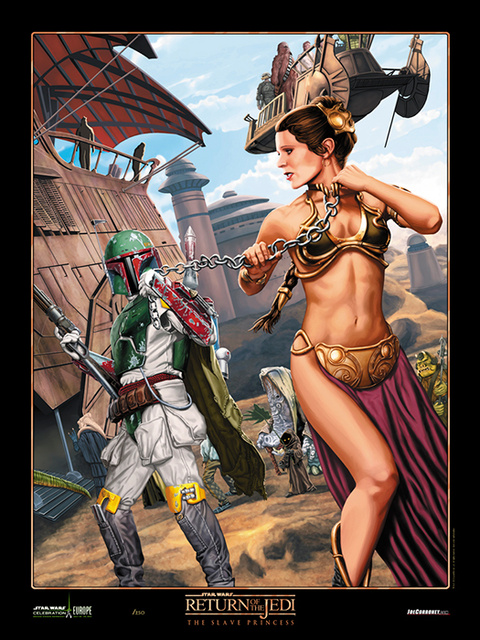
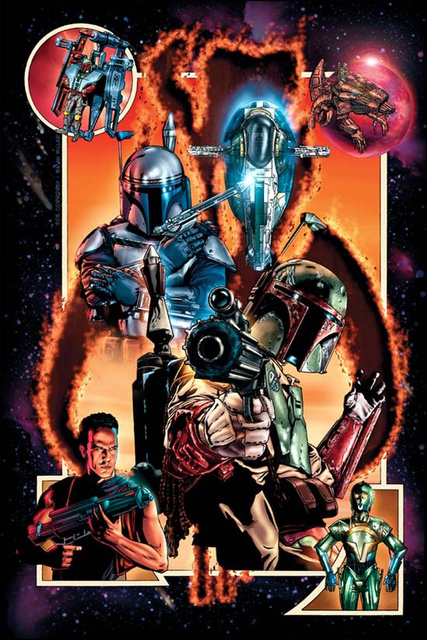
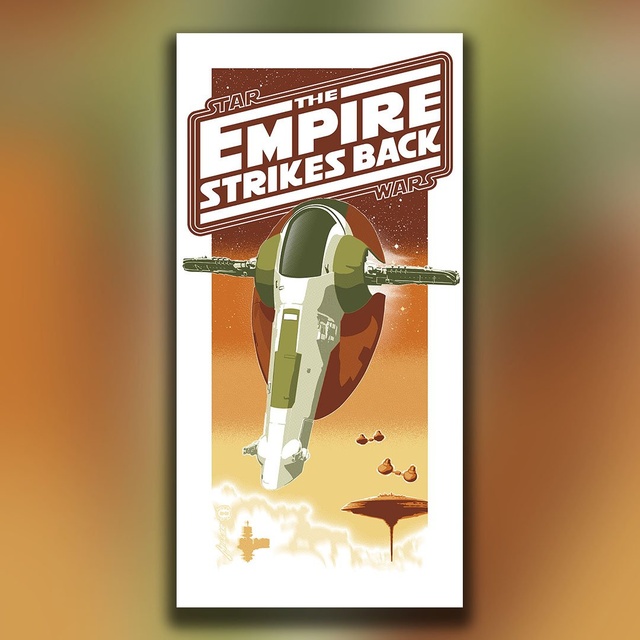
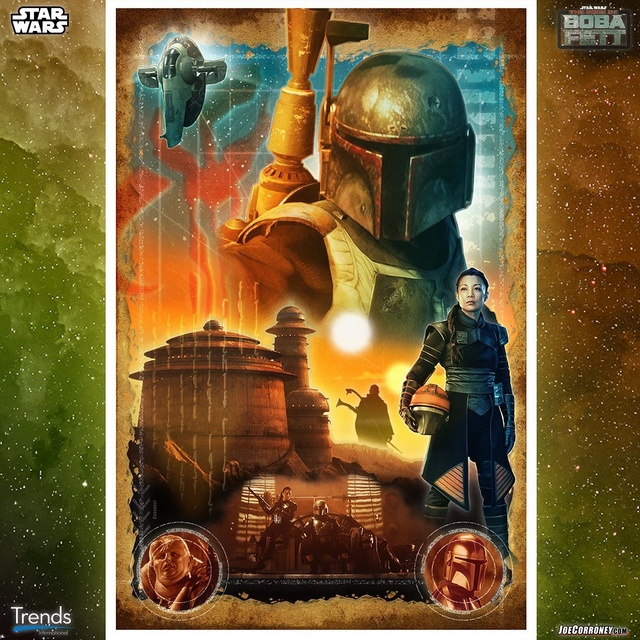
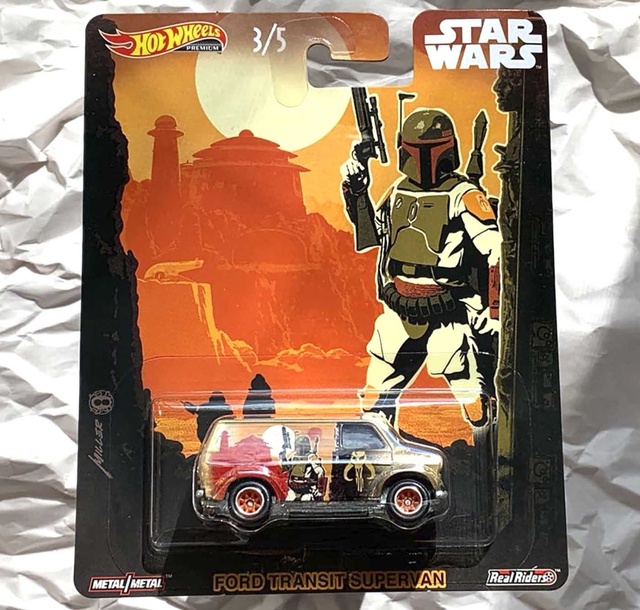


Comments